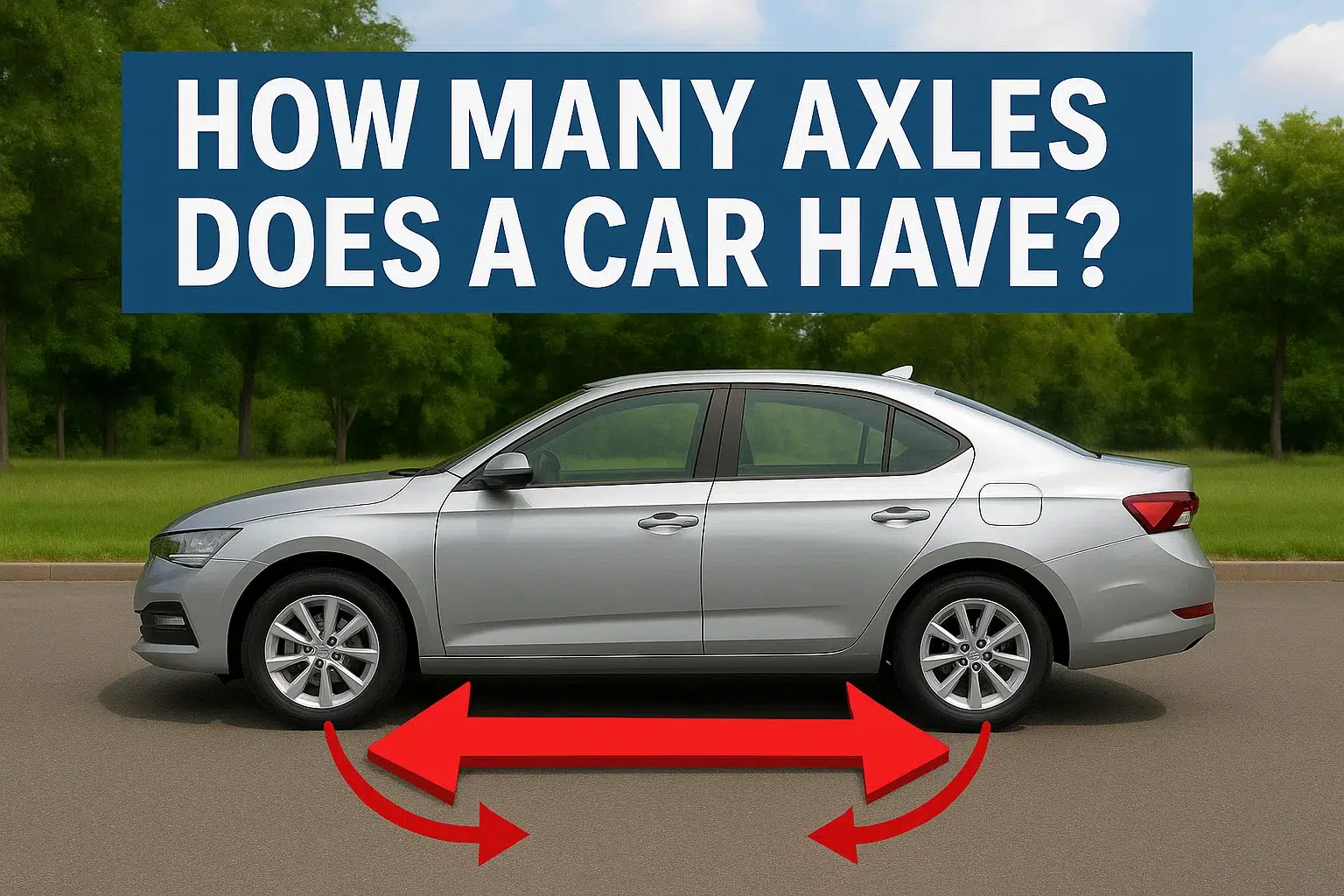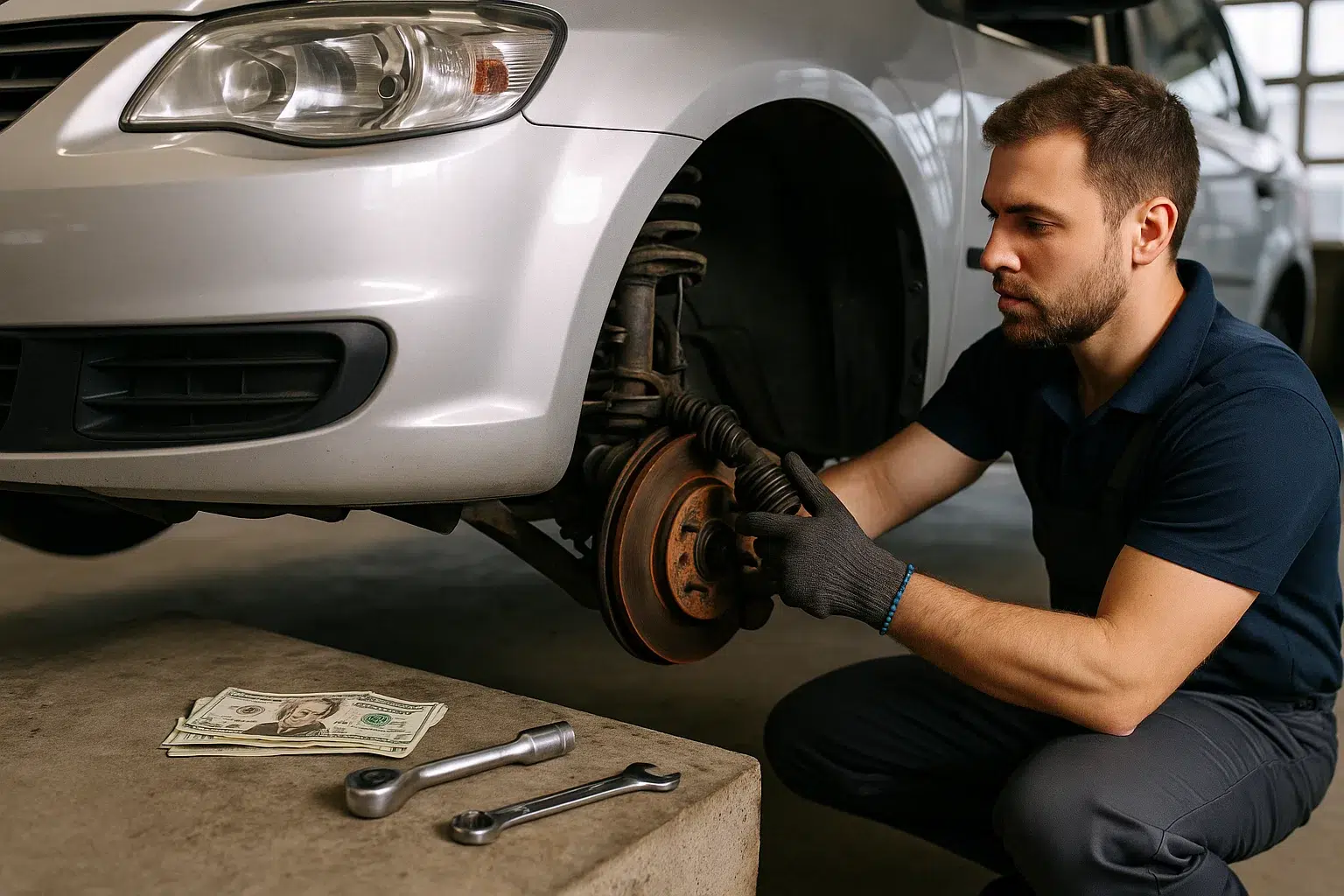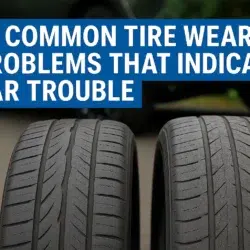Most cars have two axles, one connecting the front wheels and one connecting the rear wheels, supporting four wheels in total. Larger vehicles like trucks or buses may have more axles depending on their size and purpose.
In comprehending your vehicle, it is simple to miss some of the parts that assist in its proper functioning. Most individuals pay attention to the engine, tires, or some interior features. However, one part deserves equal focus as well; the axle. A common question most car owners ask is “How many axles does a car have?”. The answer may sound straightforward, but it changes with regard to the type of car, its intended use, and how it has been designed.
This article covers all crucial aspects regarding axles; their role in a vehicle, their quantity in different vehicles and how it impacts automobiles performance for different drivers.
What Is an Axle?
An axle refers to a rod, or shaft, that serves to connect two wheels on a vehicle. It serves multiple purposes such as supporting the weight of the vehicle, assisting in the movement, and contributing to steering and power delivery functions. Without these devices, cars would struggle to move from place to another.
In consideration of a vehicle’s architecture and its drivetrain system, various types of axles perform different functions. Understanding them can better aid in appreciating some of the mechanics involved in your automobile.
Types of Axles
Here are some common types of axles that will assist you in understanding how your vehicle works:
1. Front Axle
- It supports the front portion of the vehicle.
- It participates in steering actions.
- For vehicles with front wheel drive configurations, it drives power too.
If you’re experiencing issues with your front axle, understanding the car front axle repair cost is essential for budgeting repairs.
2. Rear Axle
- Found at the back part where it holds and supports the rear section.
- In rear wheel vehicles, it guides engine power to the driven wheels.
3. Stub Axle
- Mainly found in the front part used for steering;
- Enables wheels to rotate sideways,
If you wish for your car not succumbing to damage over time due debris around axles being kicked up, then learning how to fix scratches on a car is something worth undertaking.
How Many Axles Does a Car Have?
The Short Answer
Most standard automobiles, including sedans, hatchbacks, and coupes, have two axles. One axle associates with the front wheels while another connects to the rear wheels. Each axle supports a pair of wheels, resulting in four wheels on two axles.
This configuration applies to:
- Passenger cars
- Small SUVs
- Compact crossovers
When Cars Have More Than Two Axles
Some vehicles have more than two axles:
- Pickup trucks with dual rear wheels (dually trucks) may have three axles.
- Heavy-duty trucks can reach four to six axles depending on size and use. Buses and trailers fall under that category as well.
- Off-road military or expedition vehicles could utilize up to six wheels using three axles.
As an example, if you’re looking for a commercial vehicle rental always keep in mind the axle arrangement especially for insurance or inspection reasons. Always go through car rental for road test guides available online to pick a proper vehicle for your license exam requirements if you’re unsure about selecting a car for your driving test.
Drivetrain and Axles
The configuration of a car’s drivetrain substantially determines its axle arrangements.
Front-Wheel Drive (FWD)
- The front axle is active.
- The rear axle is passive and simply serves as support for the weight of the vehicle.
This setup is the norm in Front Wheel Drive Cars, providing a more efficient system for power and handling.
Rear-Wheel Drive (RWD)
- The rear axle is active.
- The front axle’s purpose is steering.
All-Wheel Drive (AWD) / Four-Wheel Drive (4WD)
- Both all-wheel drive and four wheel drive can be powered, and this enhances traction and control under difficult road conditions.
Usually, all wheel drive vehicles will only have 2 axles, but it is possible for high-performance off-road or utility vehicles to have three axles.
Remember when switching from an SUV and a compact car to a single large vehicle, consider how many axles are present because some trucks will add an extra axle. This is something some buyers do not think about when trading 2 cars for 1.
Role of Axles in Vehicle Performance
Aside from providing structural support, axles also impact various other parts of the vehicle performance such as:
1. Load Capacity
- More axles present means better performing load capacity.
- This is mostly seen in commercial and utility vehicles which have 3 or more axles.
2. Traction and Power Delivery
- In vehicles with all-wheel drive (AWD), both axles assist in driving the vehicle forward.
- This is especially important during winter or when it’s muddy or raining heavily outside.
3. Handling and Suspension
- The axle configuration affects turning radius and shock absorbing capabilities.
In case you want to evaluate the suitability of a vehicle for your long-term usage, like making monthly payments, it is reasonable to use an online calculating car payments tool which considers load capacity performance parameters alongside axle configuration variables.
Routine Maintenance and Common Issues with Axles
Like any other component on vehicles, the axles can undergo wear and tear or become damaged. Some common issues include:
- Damaged CV joints
- Bent axles (from potholes or collisions)
- Worn bearings
Excessive vibrations during driving, clunking sound during turning, and leaking grease around the wheels might suggest that some of the more serious problems are developing.
Your vehicle’s body damage caused by a storm might also affect the axles. While fixing the hail damage on your car’s body, it would be worthwhile to have a mechanic check your undercarriage, especially the axle housing.
Identifying Axles on Your Vehicle
There’s a straightforward way to figure out how many axles your car has. Here’s what you can do:
- Look at your wheels.
- Count pairs of wheels (one left and one right).
- Each pair represents an axle.
So when a car has four wheels, it is safe to say that it has two axles.
This method is particularly useful when assessing a vehicle for rental opportunities — including suspension type, overall drivetrain configuration, or compatibility with Big 0 Terramax tires for off-road capabilities.
Specialty Vehicles and Unique Configurations
Some vehicles do not use the standard two axles. Take a look at some of these examples:
Limousines
- They may include three axles to better distribute weight and for overall improved stability.
Commercial Trucks
- Semi trucks, also known as 18-wheelers can have five or more axles including on the trailers.
Buses and Recreational Vehicles
- Often include three axles to support the massive weight of these vehicles.
If you are wondering how much weight a car axle can bear, or what changes need to be made for better performance, higher storage capacity, or enhanced modifications, consult with a detailing expert. One good car detailing tip is to check the axle housing and brakes thoroughly during deep cleans.
Electric Vehicles and Axles
Models such as Tesla, Rivian, and Ford F-150 Lightning all operate on a two-axle configuration but have different drivetrains.
- It’s common for some EVs to have dual motors with one motor per axle for an AWD configuration.
- High performance electric vehicles might need more sophisticated axle control because of torque vectoring which is often employed.
Knowing the layout of the axles is important information that can come in handy when servicing EVs or during automated software update checks to ensure updates function well with the hardware components.
Axles and Everyday Driving
Your car’s axles may not be the first thing on your mind when driving, but they are important to:
- Guarantee smooth rides
- Support vehicle weight
- Deliver safe steering
Even something as simple as spilling coffee inside a car can potentially reach the center console area or underbelly if not cleaned well. Although it is improbable to come in contact with the axles directly, it is a good idea to have every component of your automobile well serviced — externally and internally.
Mold and Moisture Risks
Vehicles stored for long periods or left exposed to humidity can accumulate mold inside, but did you know that moisture buildup can also affect axle joints?
- Rust can develop around wheel hubs and CV joints.
- Moisture compromises grease and bearing longevity.
If you’re tackling mold issues, whether under the seats or near the trunk, also inspect underneath the car. Our guide on cleaning mold out of the car covers both interior and undercarriage cleaning methods to protect your axles from indirect damage.
Final Thoughts
So, how many axles does a car have? For most drivers, the answer is two. But as we’ve explored, the number can vary based on:
- Vehicle dimensions
- Drivetrain type
- Purpose (passenger vs. commercial)
Knowing how axles work will allow you to make better choices when it comes to buying or maintaining and upgrading a vehicle. Whether it’s your trusty sedan or a three-axle utility monster, axles are what give safety and stability during journeys.
Summary Table
| Vehicle Type | Typical Axles | Notes |
| Sedan / Hatchback | 2 | Standard layout |
| Pickup Truck (Light) | 2 | May have dual rear wheels |
| Pickup Truck (Heavy Duty) | 3 | Includes extra rear axle |
| Bus / RV | 3 | Distributes heavy load |
| Commercial Truck | 4 – 6 | Depends on trailer configuration |
| EV / Hybrid | 2 | AWD possible with dual motors |

I am Tushar Balchandani, founder of Car Info Expert and someone who has been working extensively in the car industry as a car expert for 15 years. My aim is to provide useful truthful and reliable information to the readers based on my real experiences and hands-on experience. From buying tips to maintenance guides, I help readers make confident car-related decisions.




